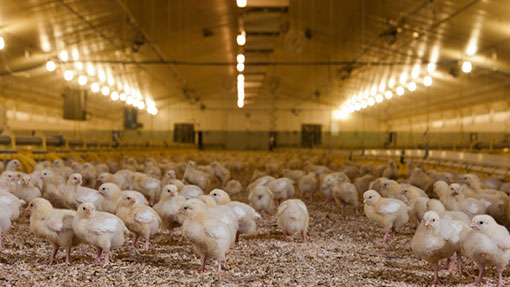Farmers should put energy saving ahead of energy generation

Maximising energy efficiency across the farm business should be the first step before any investment in renewable energy technology. Paul Spackman discovers why.
Most farmers have a fair idea of how much they spend on heat or electricity but relatively few accurately monitor and record energy consumption regularly. Such processes are often sidelined by daily business pressures and overlooked prior to investment in renewable energy kit.
The wider uptake of Smart meters and other energy-saving systems is slowly changing this and farms could make significant savings by using such tools.
The Carbon Trust says while energy costs may only represent a small proportion of turnover on many farms, cutting them by 20% can represent the same benefit to profitability as a 5% increase in sales.
Potential savings are greatest in energy-intensive sectors such as pigs, poultry, dairy and those reliant on refrigerated storage but relatively simple measures can be applied on any farm.
Improving the energy efficiency of existing buildings, equipment and processes could give a quicker and longer-lasting financial return than any other investment activity, including a renewables project, says the Farm Energy Centre (FEC).
Loans for energy-saving kit
- Farmers still have time to access interest-free loans to upgrade or improve the efficiency of farming equipment through the Carbon Trust/ Siemans Energy Efficiency Financing scheme. The £550m three-year scheme was launched in 2011 for eligible energy-saving equipment. See Carbon Trust for loan details
That is especially true given the on-going reductions to FiT support, which mean project viability is increasingly dependent on energy savings rather than export or generation tariffs, says the FEC’s Andrew Kneeshaw.
With farmers typically paying 10-12p/kWh for electricity, displacing as much as possible either through energy efficiency or renewable generation, makes financial sense, he says. “That displacement value goes up with the price of energy, which has historically been higher than RPI, which the Feed-in Tariff is linked to.”
Know your costs
Before doing anything, it is vital to understand exactly how and where energy is used within the various activities of the business through an energy audit, says Mr Kneeshaw.
Larger energy users, typically spending more than £10,000-15,000 a year, are better able to justify the cost of a full professional energy audit on a regular basis, but for lower energy users, the “audit” may take a less formal approach, he says.
“Energy audits are all about understanding how and when you use energy to highlight areas where it can be saved and then looking at how renewables can be worked into a longer-term strategy.”
Energy audits are particularly relevant where a renewable energy project is planned, says Victoria Lancaster, renewable energy adviser for H&H Land and Property.
A project based on fixed payments from power companies may make economic sense now, but it could be less attractive in 10 or 20 years’ time unless it is planned carefully and fits in with the long-term plan for the farm business, she says.
For large and small businesses, metering energy use for specific activities (for example, for individual stores) is crucial, giving a much more detailed breakdown of variations in energy use at different times of day or night throughout the season, Mr Kneeshaw says.
“At £300-400 for a decent meter and telemetry system, it’s a relatively cheap thing to do, but can be very informative. The more information you get, the easier it is to develop a strategy for saving energy or generating your own.”
Scope for savings
Lighting, heating (including heating water and grain drying), ventilation, air circulation and refrigeration are the biggest energy consumers on farms, offering the largest scope for savings, says the Carbon Trust, which has published energy saving advice for farmers and growers.
It outlines a number of measures that can be adopted in different farming sectors to save energy, including:
- Ensure control systems (timers, thermostats) are set correctly to only use energy when needed. Compensator control systems or optimum start controllers can both help maintain more stable temperatures and regulate heating according to weather
- Maintain boilers, pipework, compressors and other equipment – regular servicing of boilers can save 10% a year
- Insulate pipes, hot water tanks, buildings
- Consider radiant heating in buildings where heat is easily lost. These are generally mounted overhead and avoid excessive heating of surrounding air
- Fit low-energy lighting (LEDs, fluorescent strips or sodium lamps), daylight sensors, occupancy sensors
- Fit PVC curtains or self-closing doors on cold stores to reduce heat loss
- Consider energy efficient technology e.g. pre-cooling milk through plate coolers can halve cooling costs; underfloor heating pads in farrowing pens rather than infrared bulbs; variable speed fans for ventilation
- Monitor energy use to identify where biggest savings can be made and monitor effectiveness of energy-saving measures
- Maximise Enhanced Capital Allowances that allow businesses to buy energy efficient equipment using a 100% rate of tax allowance. Equipment must be listed on the Energy Technology List to qualify
Refer to Farm Energy Centre for further information or the Carbon Trust booklet
